On 13 May 2023, the soon-to-be-commissioned Multi-Mission Frigate (FREMM DA; French: Frégate Européenne Multimissions de Défense Aérienne) Lorraine berthed at Changi Naval Base as part of a scheduled stop on its four-month long-term deployment (DLD; French: Déploiement de Longue Durée) which began on 8 April. The deployment is designed to test the robustness of its combat systems, and the testing and evaluation of its sensors and command and control functions in the warm waters and demanding environment of the Pacific. Upon its return to France at the beginning of August, Lorraine will be officially commissioned as a French Navy (French: Marine Nationale) warship.
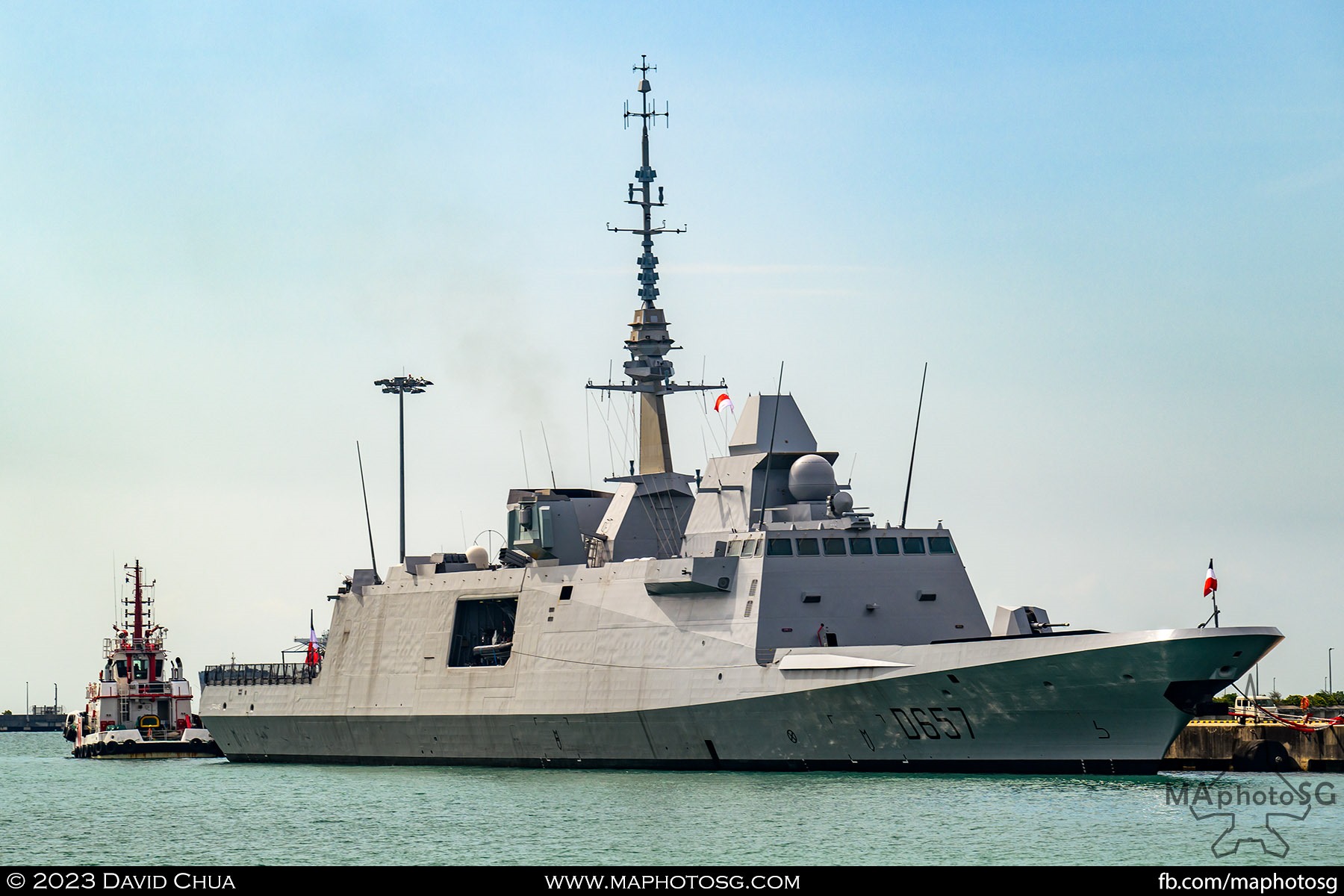
1. FREMM DA Lorraine berthed at Changi Naval Base
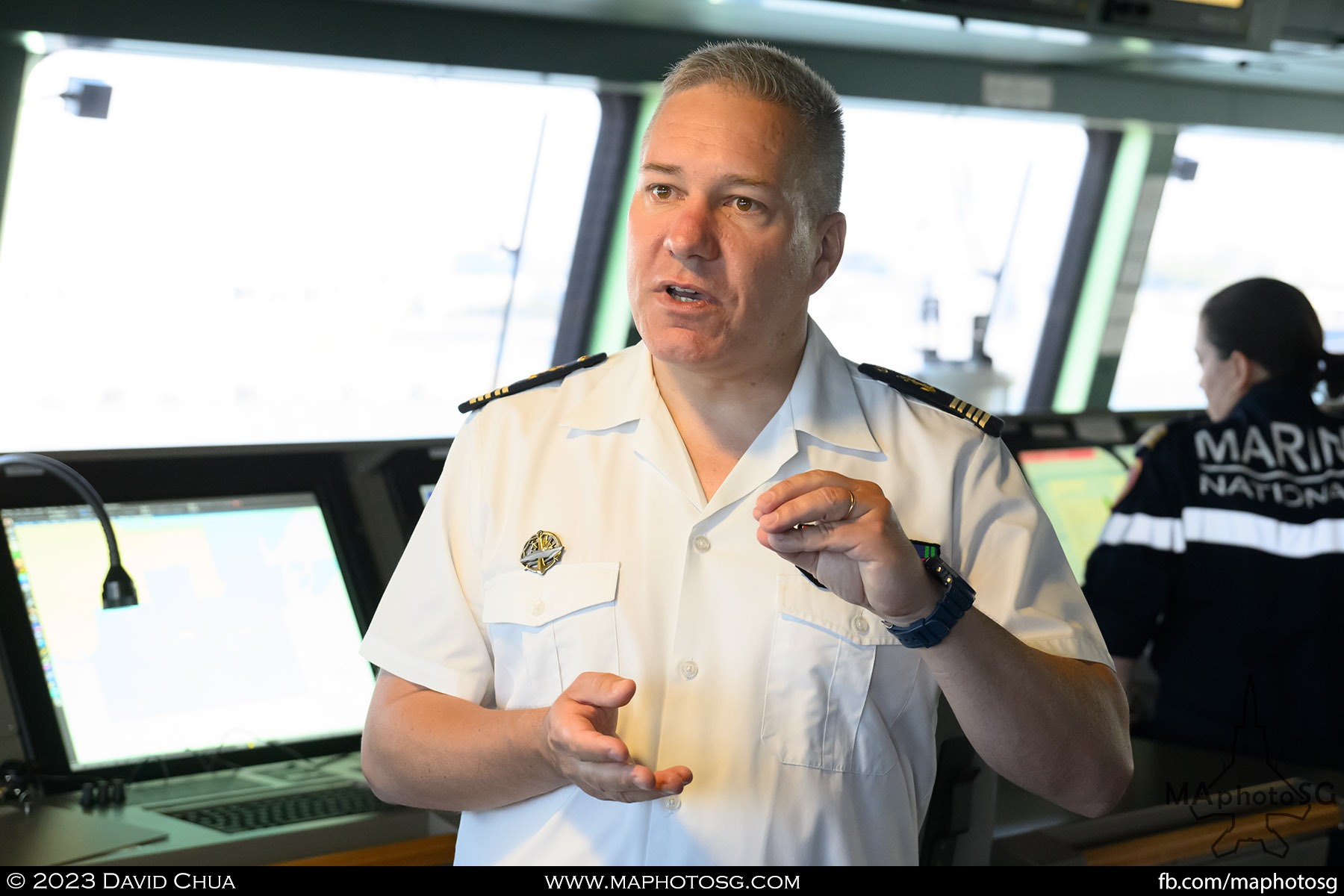
2. Captain Xavier Bagot, Commanding Officer, FFREM DA Lorraine, delivering a media briefing on the bridge
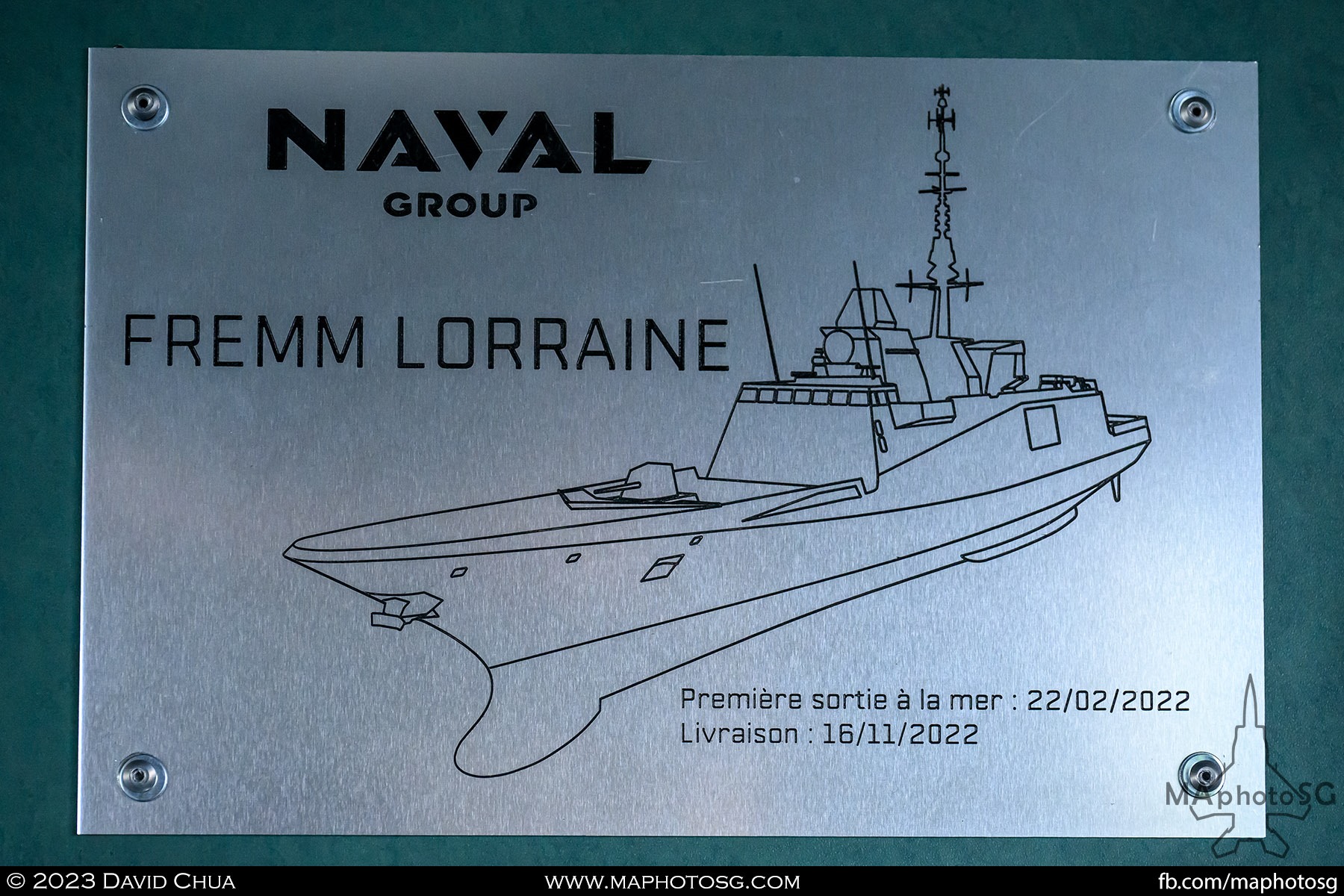
3. Plaque indicating the dates of Lorraine’s first sea mission and delivery
French Navy FREMM Programme
The FREMM (French: Frégate Européenne Multimissions; Italian: Fregata Europea Multi-Missione), or European Multi-Mission Frigate, is a Franco-Italian family of frigates designed by Naval Group and Fincantieri. With a common baseline platform, the vessels can be equipped with different systems and weaponry depending on the naval requirements of the purchasing nation. In addition to France and Italy, FREMMs are in service with the navies of Egypt and Morocco, and have been ordered by Indonesia and the United States. Common baseline equipment of the FREMMs include the Leonardo OTO Melara 76mm main gun, Thales UMS 4110CL hull sonar and Thales CAPTAS-4 (Combined Active Passive Towed Array Sonar) VDS (Variable Depth Sonar).
French FREMMs are known in service as the Aquitaine class, and 17 vessels were originally planned, but was later reduced to 8. The lead ship of the class, Aquitaine, was commissioned in November 2012 and the first 6 ships of the class were the ASW (Anti-Submarine Warfare) variant. The last 2 ships, Alsace and Lorraine, were to be the air defence variants, tasked with the defence of high value critical French Navy vessels such as the Charles de Gaulle aircraft carrier or Mistral class LHDs (Landing Helicopter Dock). All French FREMMs are built by Naval Group in Lorient and named after French regions.
The French FREMMs are equipped with French-specified equipment such as the OTO Melara 76mm Super Rapid main gun, Nexter Narwhal 20mm Remote Weapon System, MBDA Exocet MM40 Block 3 anti-ship missiles, Leonardo B515/3 double torpedo launchers, 16-cell MBDA SYLVER (French: SYstème de Lancement VERtical) A43/A50 VLS (Vertical Launching System) for Aster (French: Aérospatiale Terminale) 15/30 surface-to-air missiles, MBDA SYLVER A70 VLS for MdCN (French: Missile de Croisière Naval) cruise missiles and SETIS (Ship Enhanced Tactical information System) combat management system. All have a single hangar equipped with a SAMAHE (French: Système d’Áide à la MAnutention d’Helicoptères Embarqués) helicopter handling system, capable of operating a NHIndustries NH90 Caïman NFH (NATO Frigate Helicopter) up to sea state 6.
The vessels have a length of 142m and a beam of 20m, and displaced at 6000 tons. They have a range of 6000 nautical miles with a cruising speed of 15 knots and maximum of 28 knots. They are powered by CODLOG (COmbined DieseL Or Gas) powerplants, comprising of one General Electric/Avio LM2500+G4 gas turbine, twin Jeumont Electric 2.5 MW electric motors and four MTU Series 4000 (2.2 MW) diesel generators.
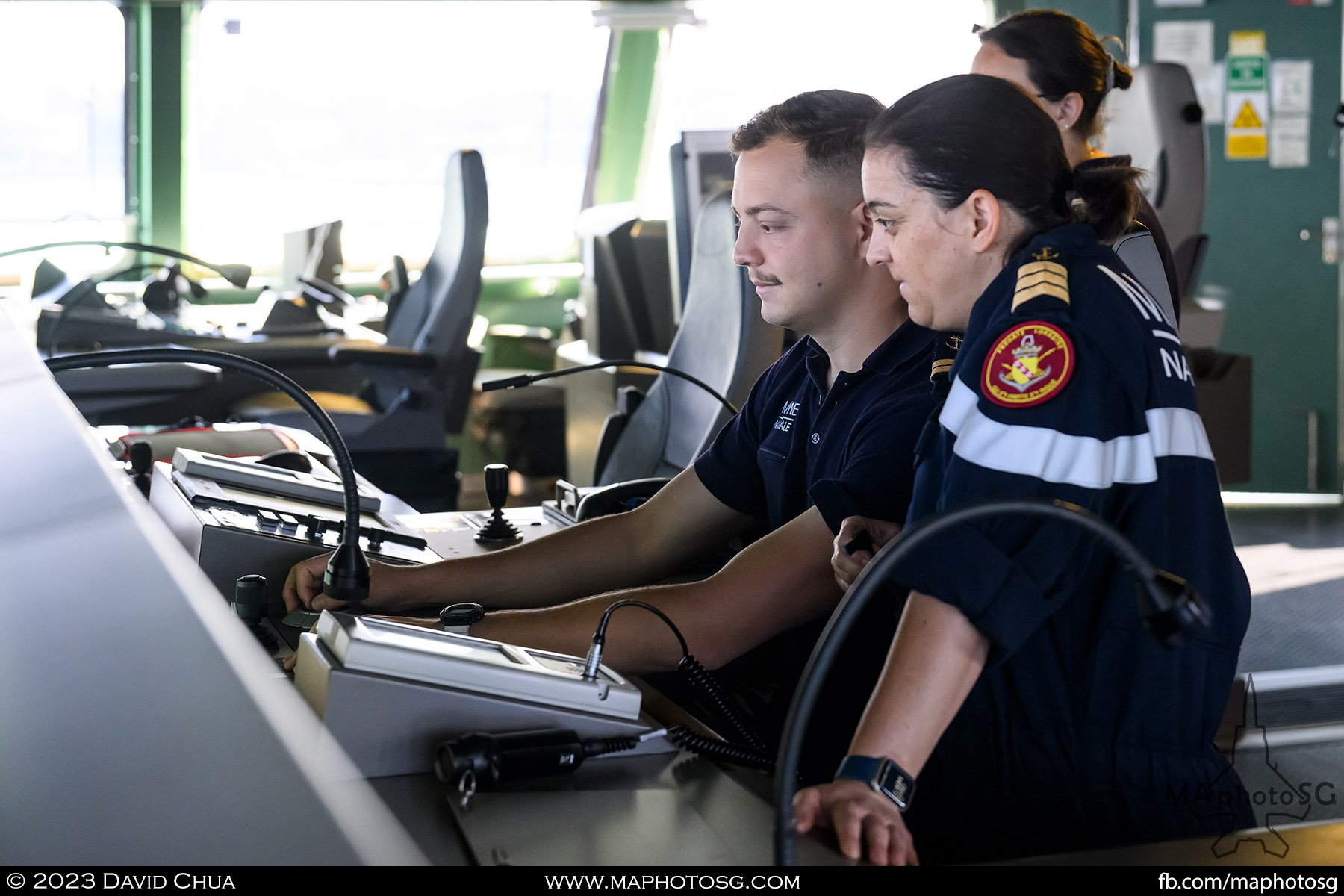
4. Lorraine sails with its full complement of 145 personnel for this four-month deployment
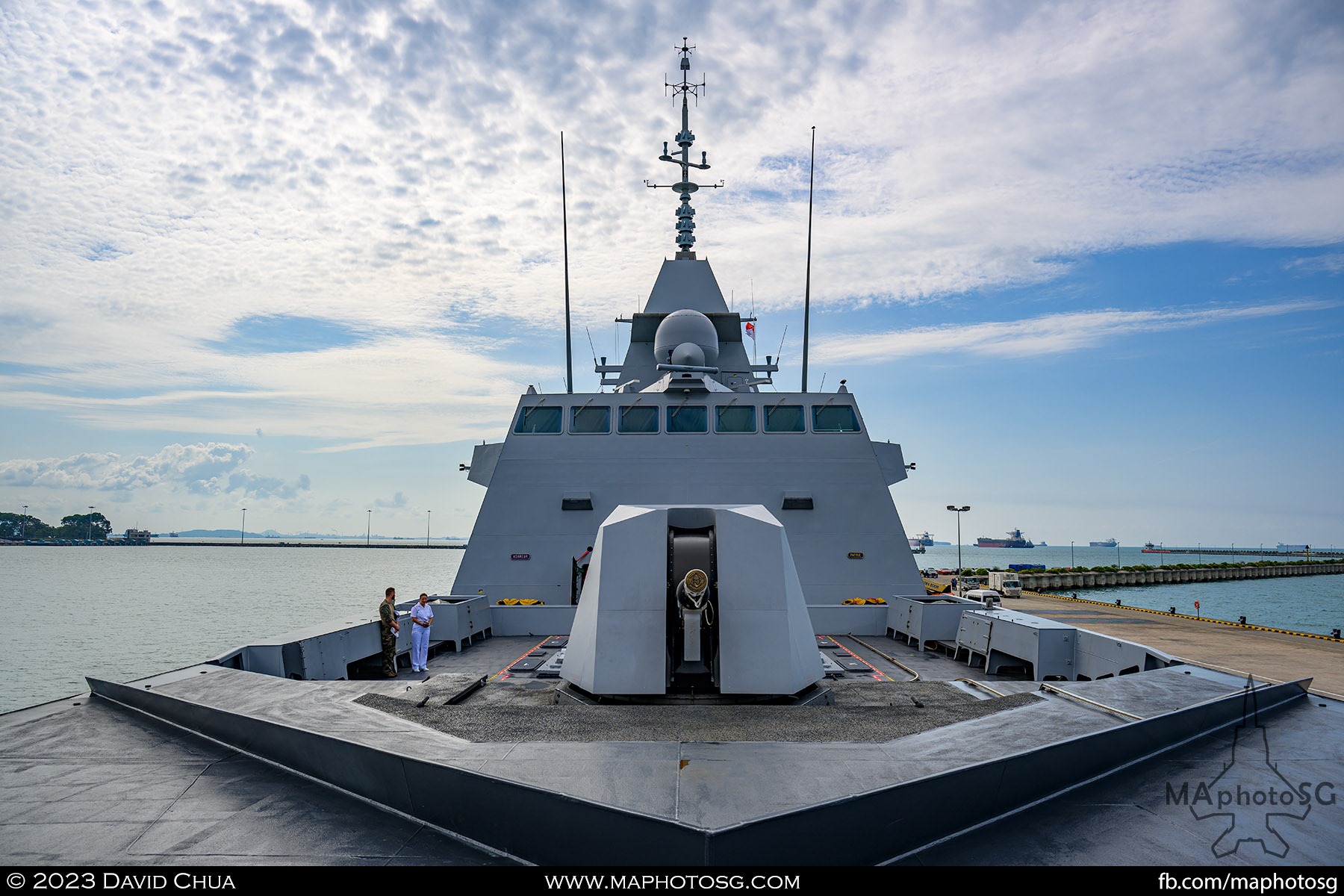
5. OTO Melara 76mm/62 Super Rapid main gun
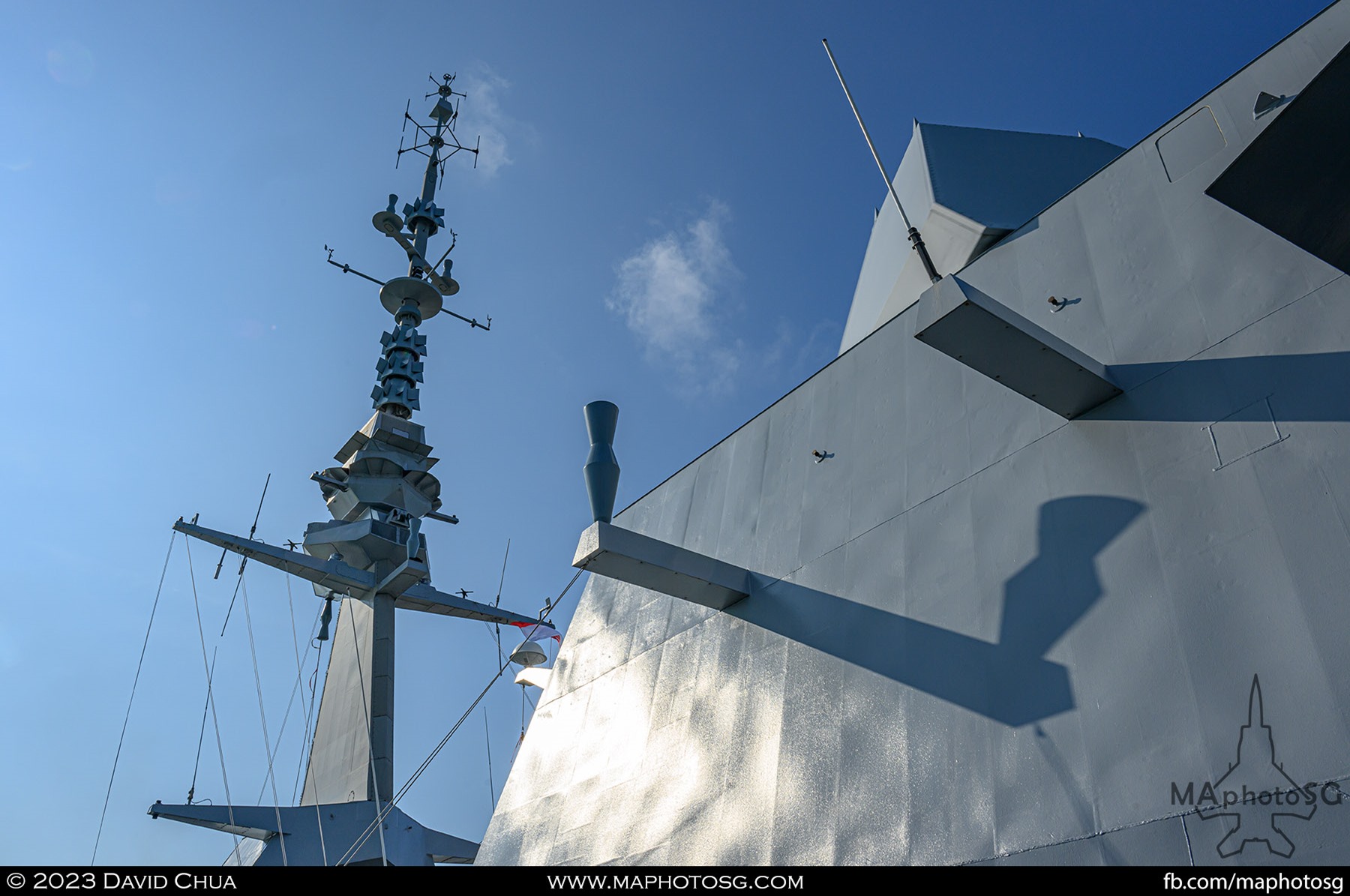
6. The main mast on left with the Thales ALTESSE C-ESM, UHF Antenna modules, Thales VIGILE R-ESM and Thales ARTEMIS IRST. The Thales Héraklès radar is on the upper right.
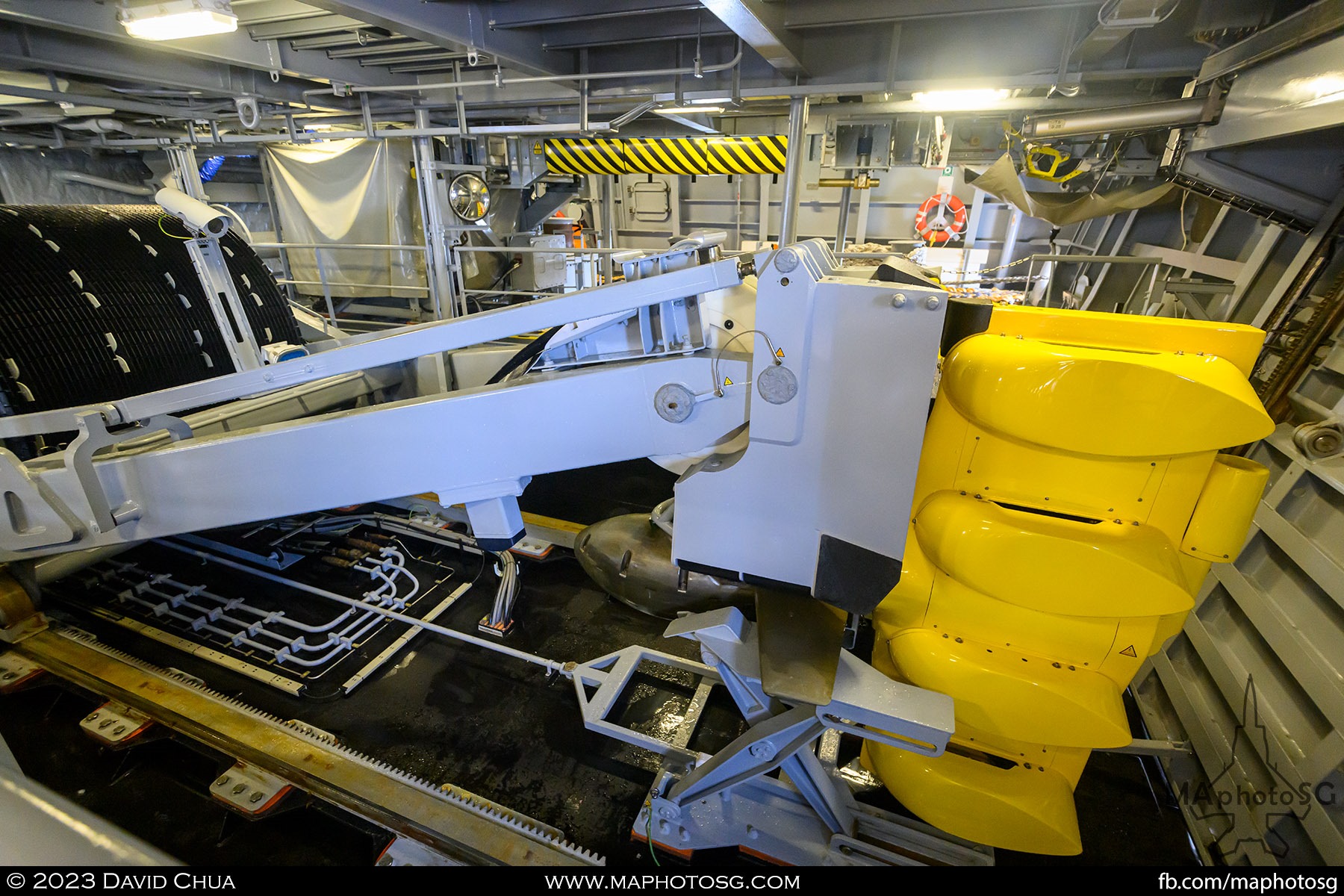
7. Thales CAPTAS-4 VDS
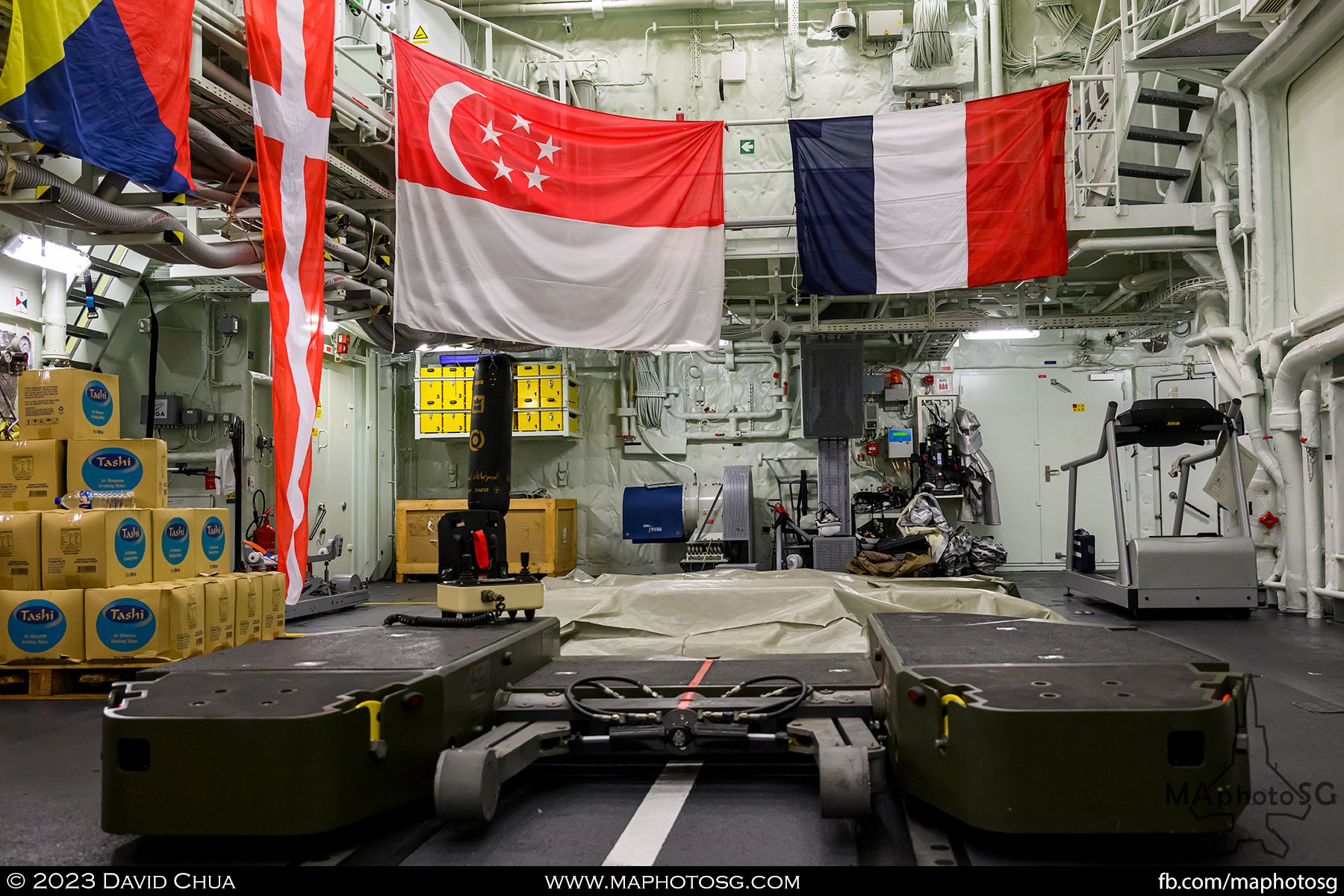
8. Nose wheel component of the SAMAHE helicopter landing system
FREMM DA
The FREMM DAs were based on a French Navy air defence requirement, FREDA (French: FREgates de Défense Aériennes), or Air Defence Frigates, and Alsace was tested in the cold waters of the northern Atlantic environment and commissioned in April 2021. Both vessels are fully capable of performing both ASW and Air Defence roles. The significant equipment differences between the FREMM and FREMM DA variants are:
– Thales Héraklès radar with additional transmitter modules and search modes for longer range air defence
– Reduced radar mast thickness to provide a full 360 detection of incoming threats with no blind zones
– Removal of the MBDA SYLVER A70 VLS
– 32-cell MBDA SYLVER A50 VLS for Aster 15/30 surface-to-air missiles
– Thales STIR 1.2 EO (Electro-Optical) Mk 2 fire control radar for main gun
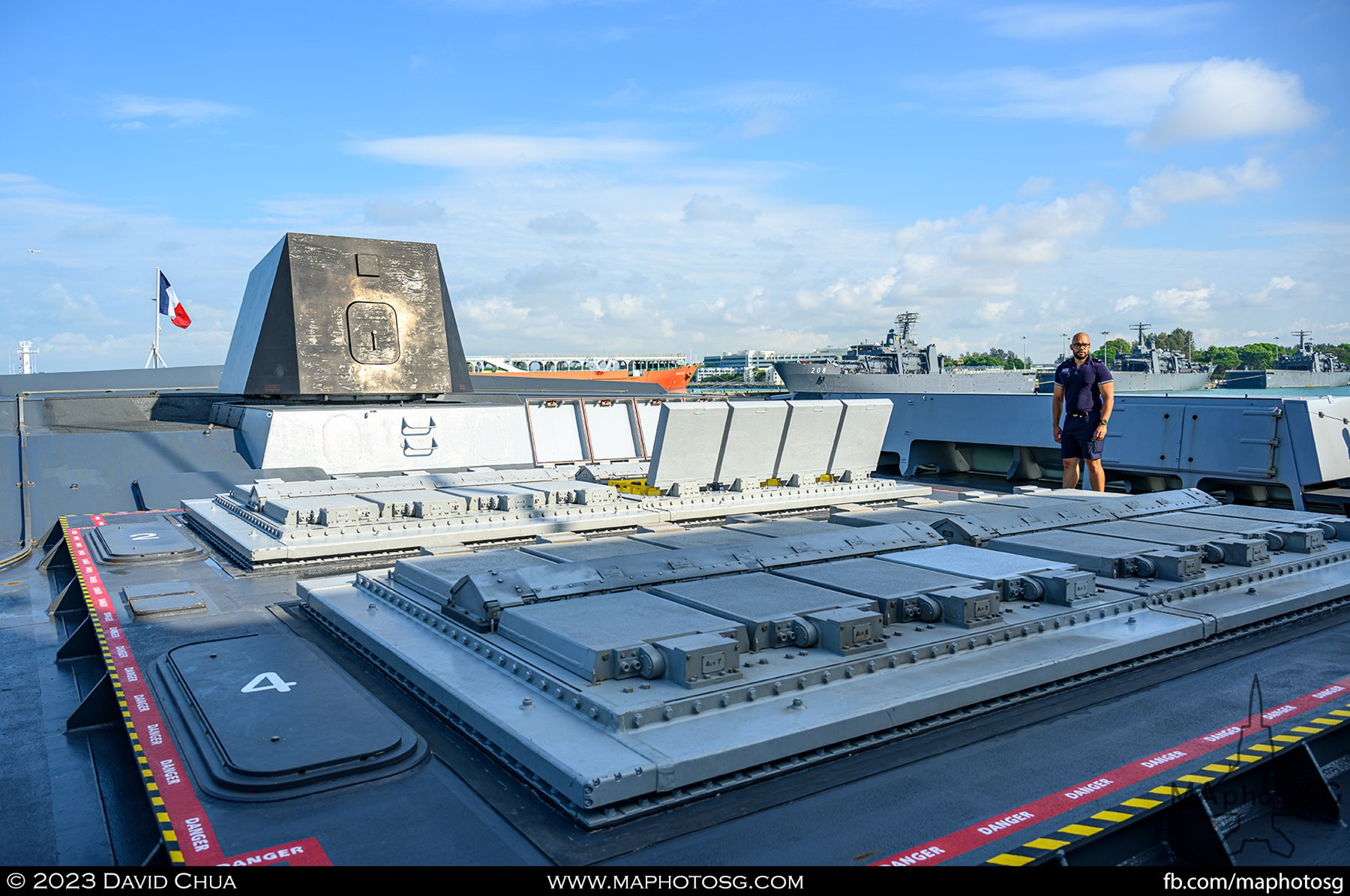
9. The 32-cell MBDA SYLVER A50 VLS located behind the main gun
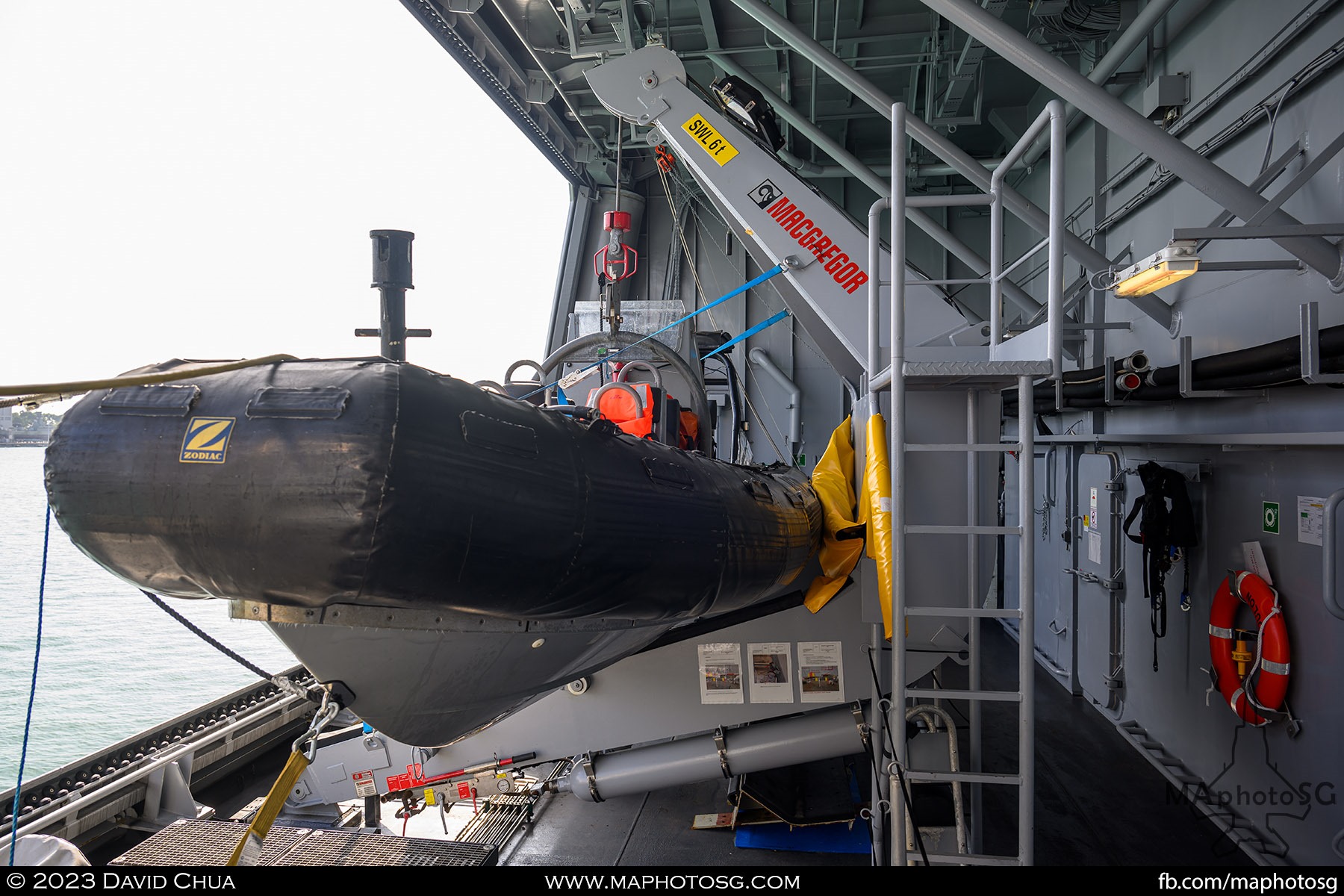
10. Zodiac Hurricane 11m RHIB (Rigid Hull Inflatable Boat)
Operation SAGITTAIRE
On 22 April 2023, the French authorities officially launched Operation SAGITTAIRE, a military operation to evacuate French and allied nationals out of Sudan due to the worsening outbreak of hostilities between the Sudanese Armed Forces and paramilitary Rapid Support Forces which turned Khartoum into a warzone. French Air and Space Force (French: Armée de l’air et de l’espace) A400Ms, C-130H and A330 MRTT aircraft landed at Wadi Seidna airbase north of Khartoum with 150 French soldiers and vehicles, and the convoys proceeded outwards to bring evacuees to the airbase. The aircraft flew rotational evacuation flights from 23-25 April, evacuating the nationals to Djibouti.
While Lorraine was in the Red Sea supporting Operation EUNAVFOR ATALANTA, French authorities received a request for help from the UN (United Nations) which had a UN land convoy reaching Port Sudan. On 25 April, Lorraine docked at Port Sudan after picking up additional supplies from Djibouti. 400 nationals from about 60 countries, including 100 children, were evacuated by the vessel, which sailed 8 hours to disembarked them at Jeddah in Saudi Arabia. Priority was given to those who have injuries, women and children, and the ship’s medical team provided the required care to medical cases among the evacuees. Operation SAGITTAIRE was officially ended on 25 April, and more than 900 nationals, including nearly 700 foreigners from 80 countries, were evacuated.
Despite having a full complement crew onboard, Lorraine was able to accommodate the additional persons on board, including preparing and serving two meals to all by the five chefs in the ship’s galley. Some areas onboard were cleared of the furnishings, and duvets and blankets were provided for the duration of the journey.
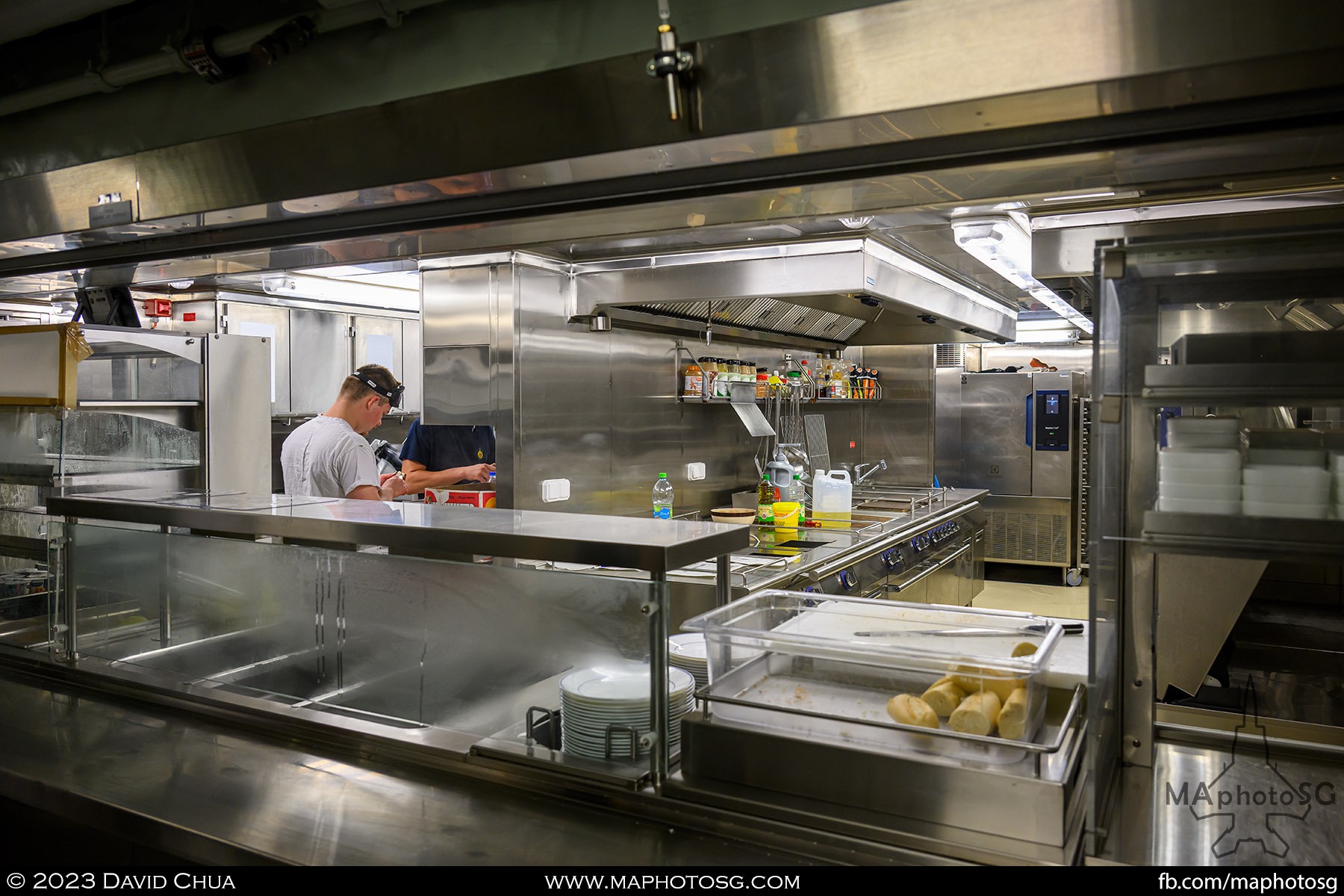
11. The ship’s galley has all the necessary cooking amenities, including a bread making machine
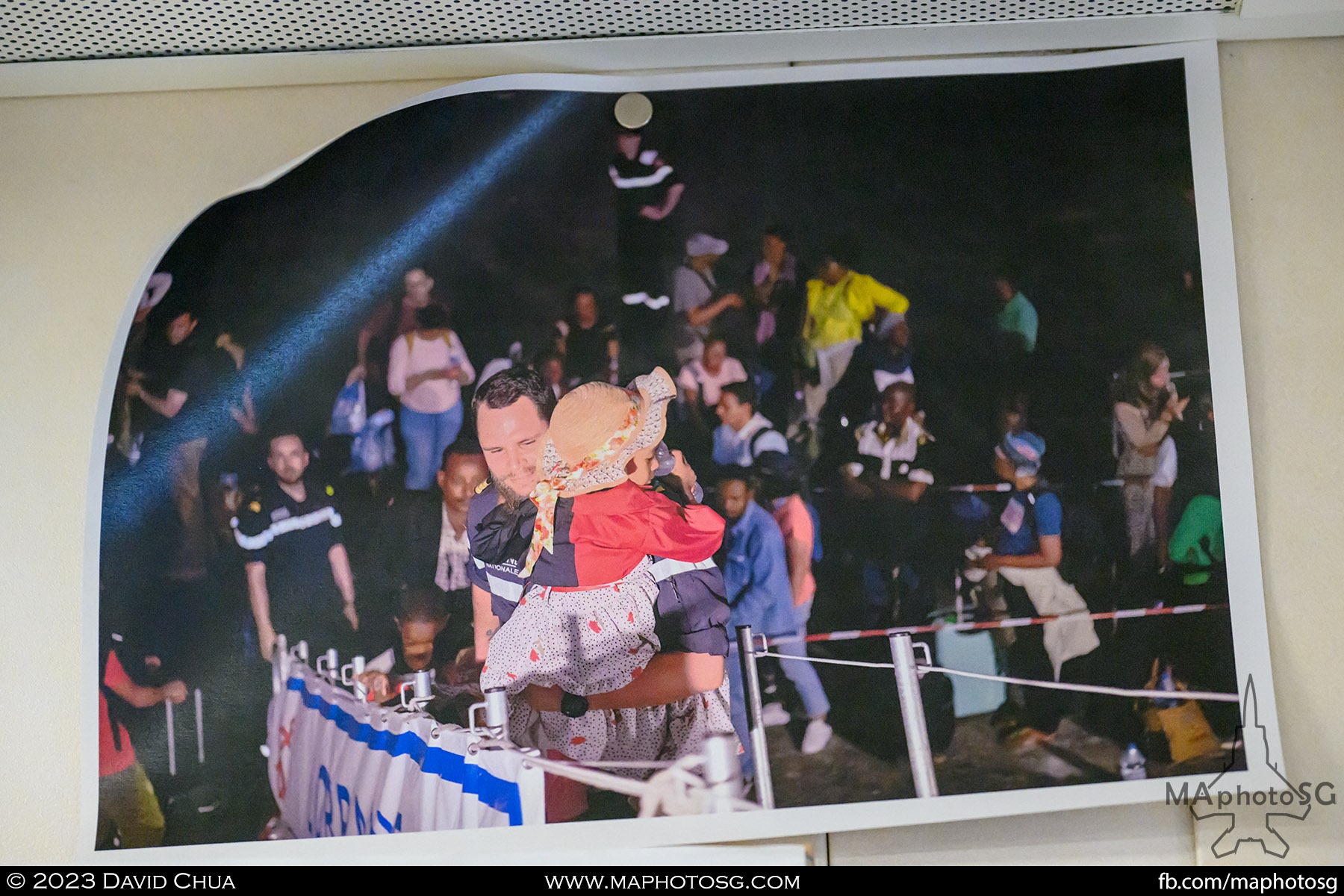
12. A photo of the evacuation at Port Sudan by the Lorraine crew
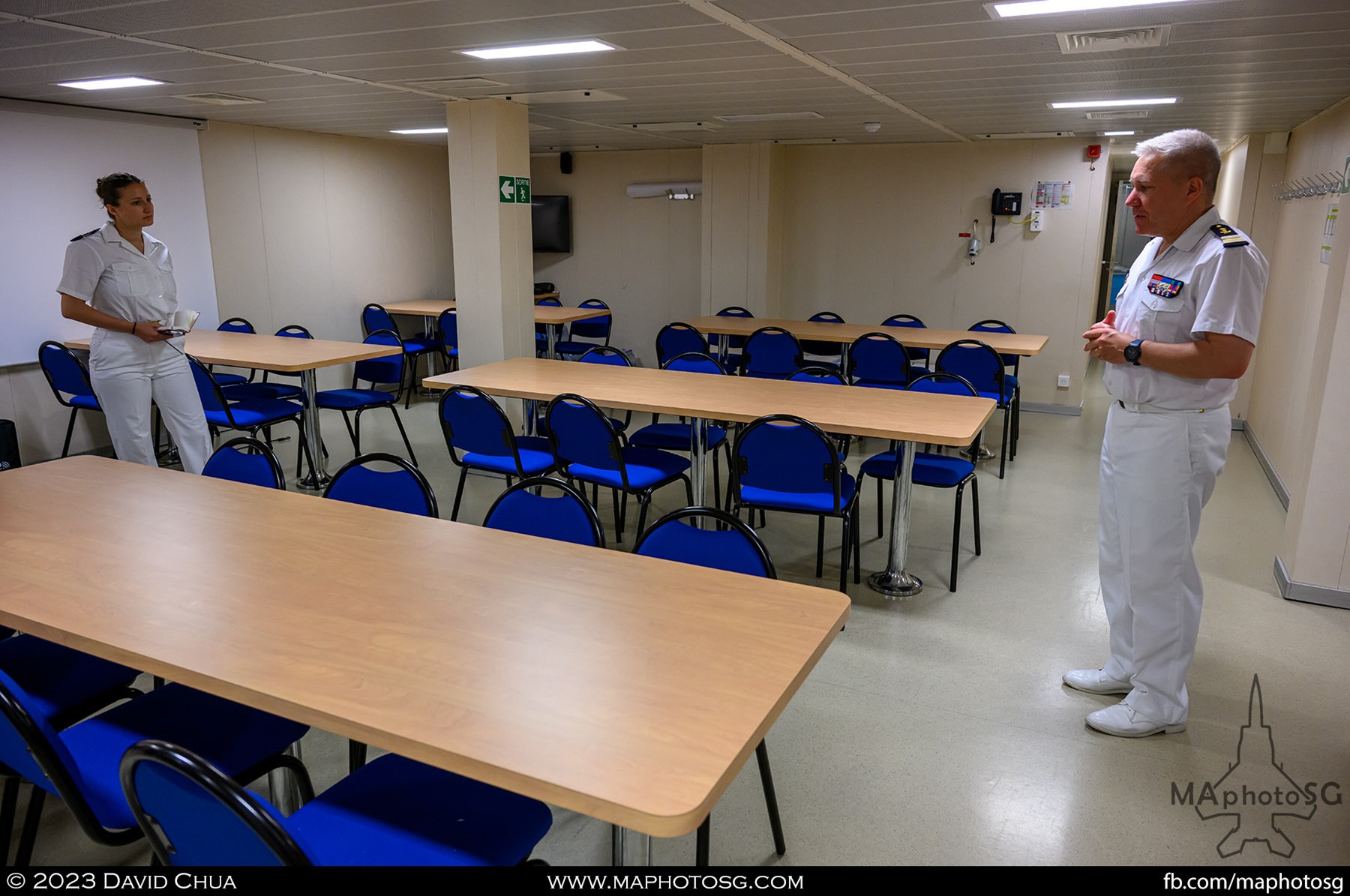
13. One of the wardrooms that was turned into a resting area for the evacuees during Operation SAGITTAIRE
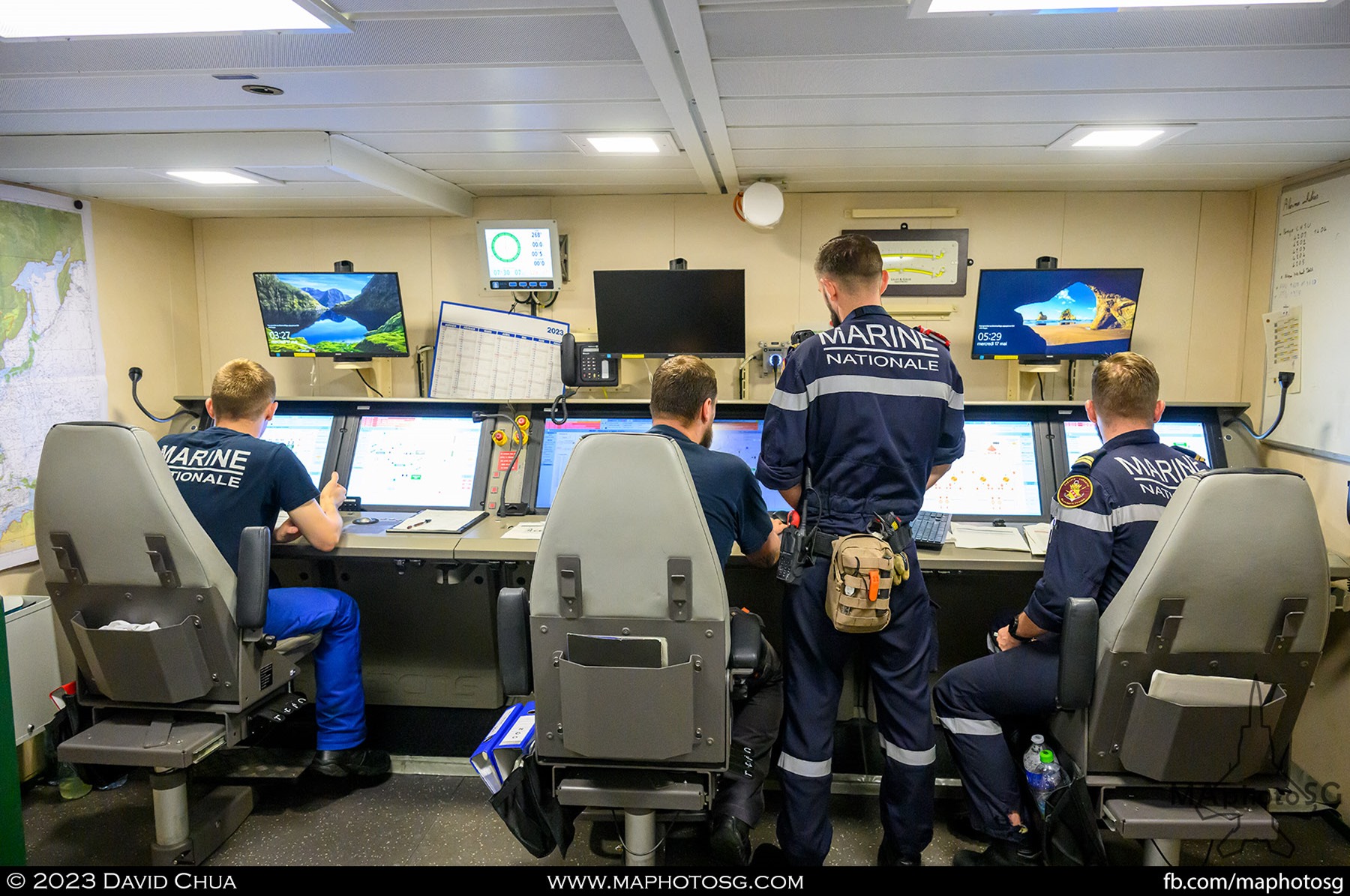
14. The ship management system room allows the monitoring and control of the engines, fire-fighting and security of the entire vessel
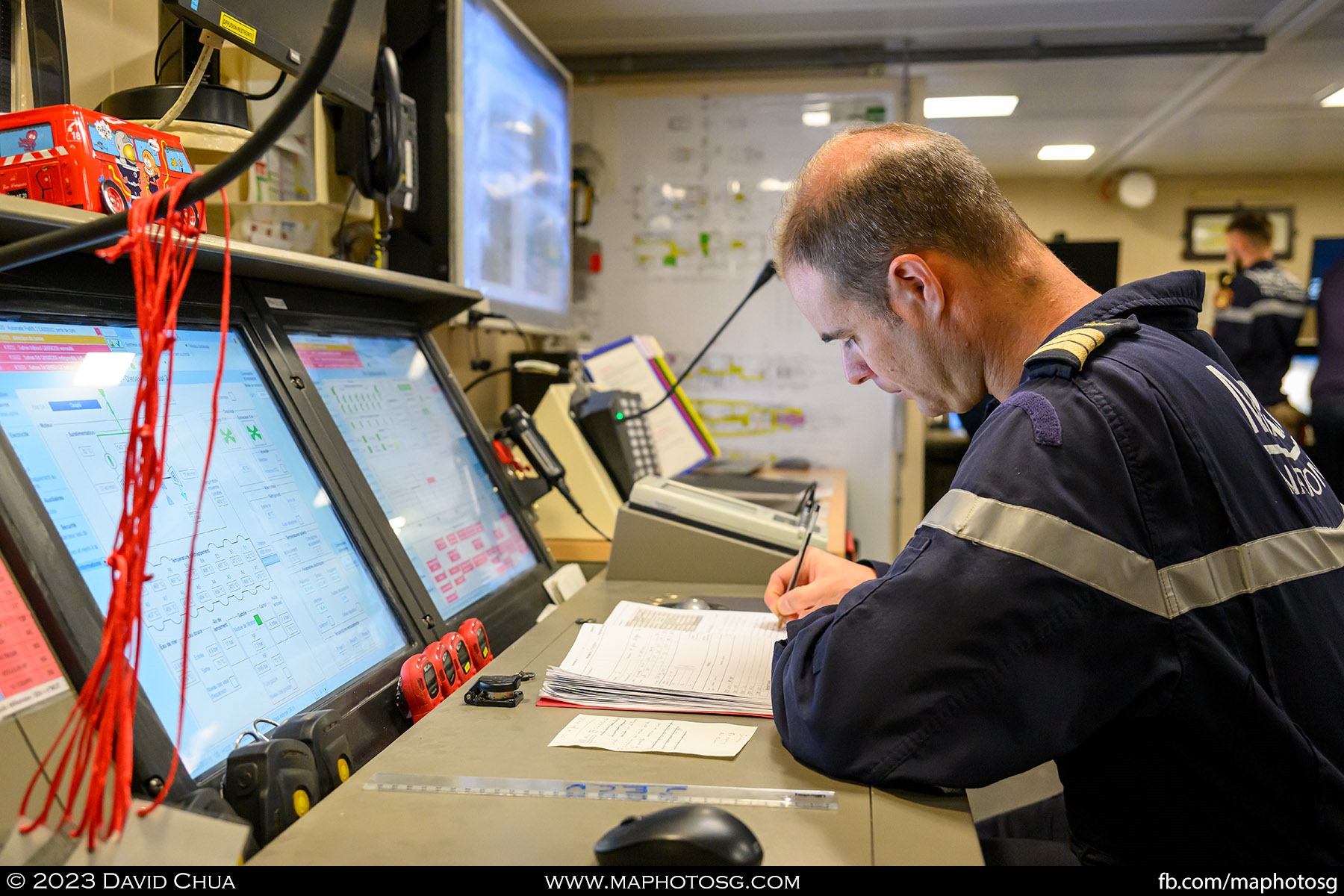
15. The fire-fighting section is manned 24 hours by rotating teams to ensure the safety of the ship
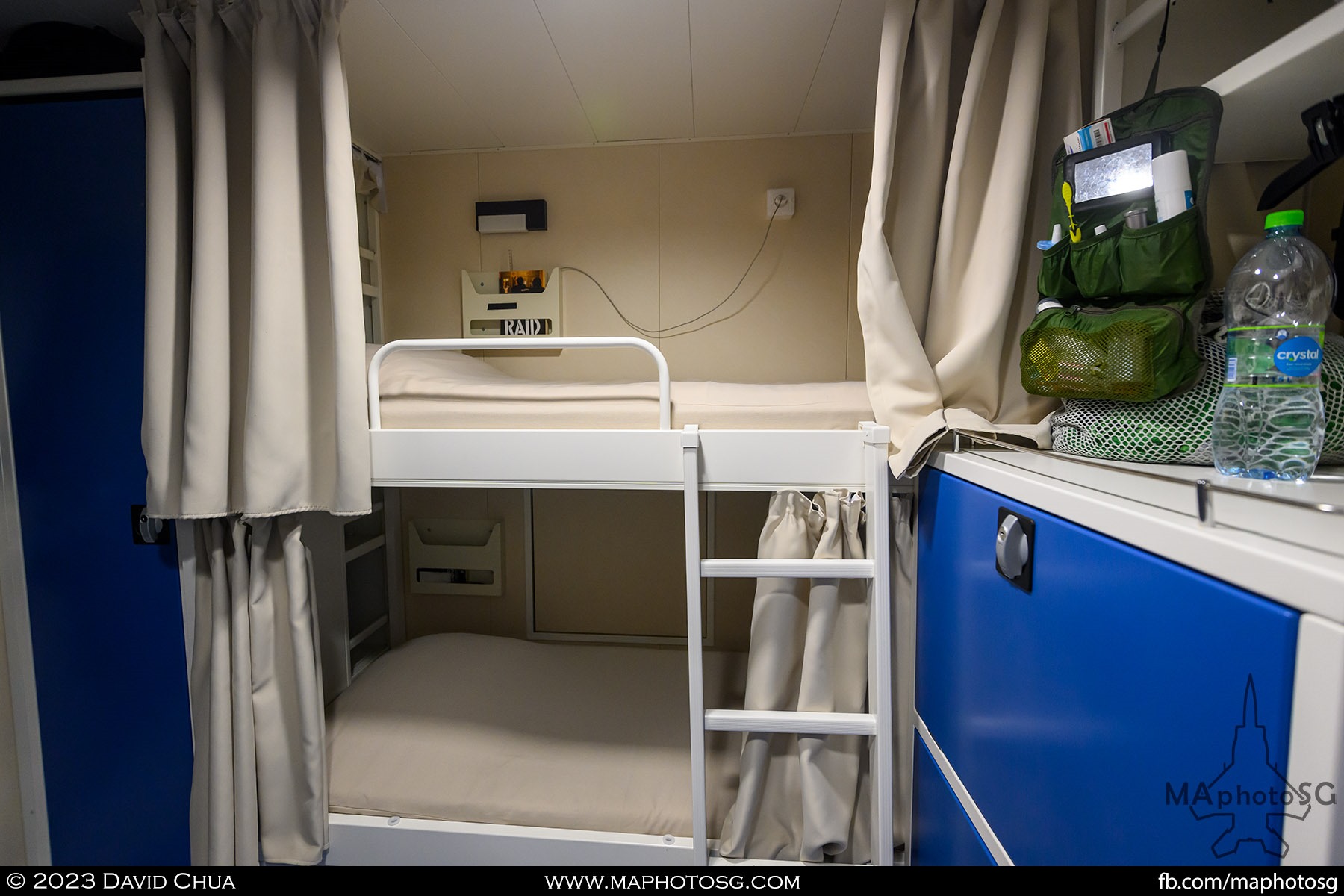
16. One of the many 4-person staterooms found throughout the Lorraine, and there are more bunks than the full crew complement onboard
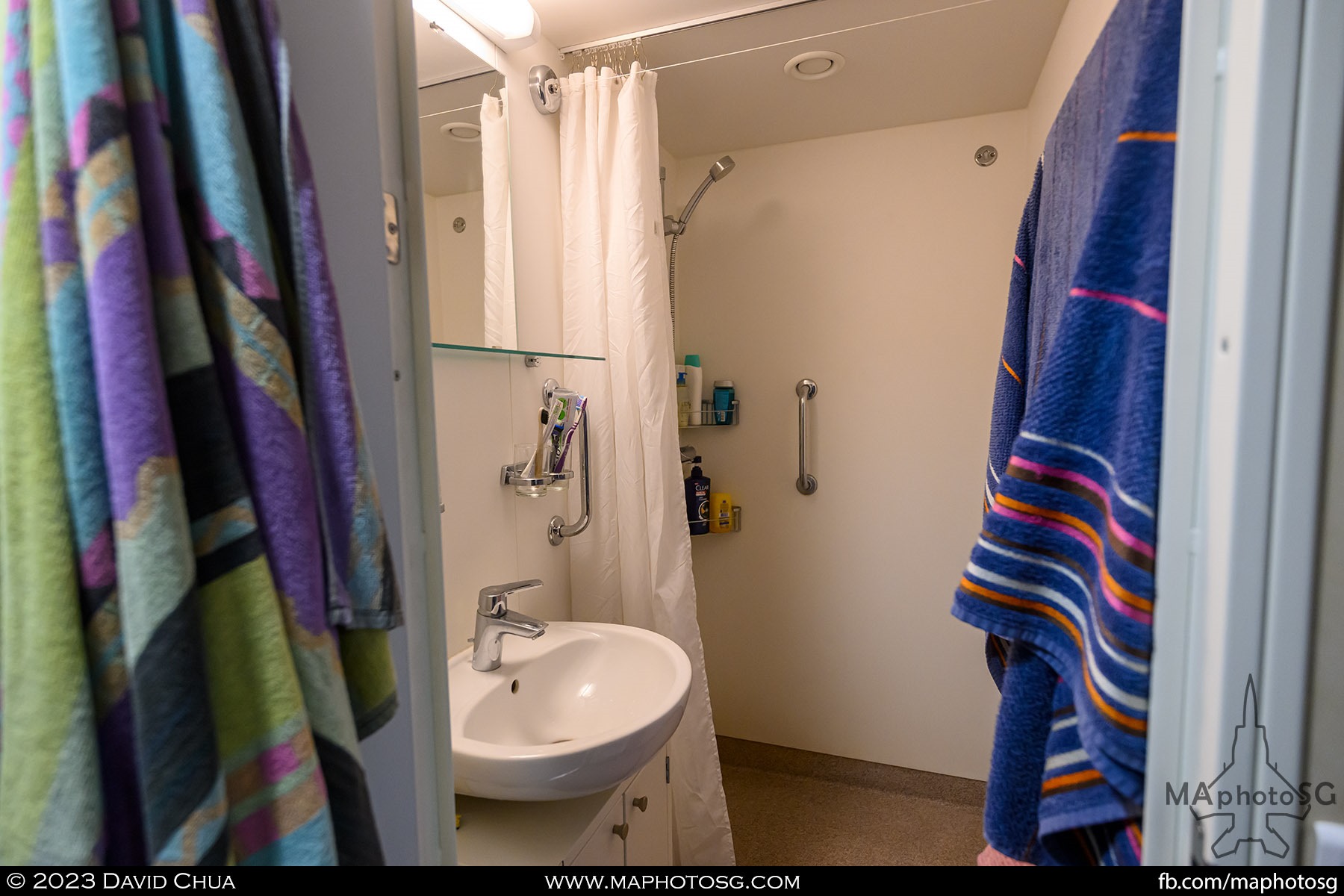
17. Full shower facilities are available in each stateroom
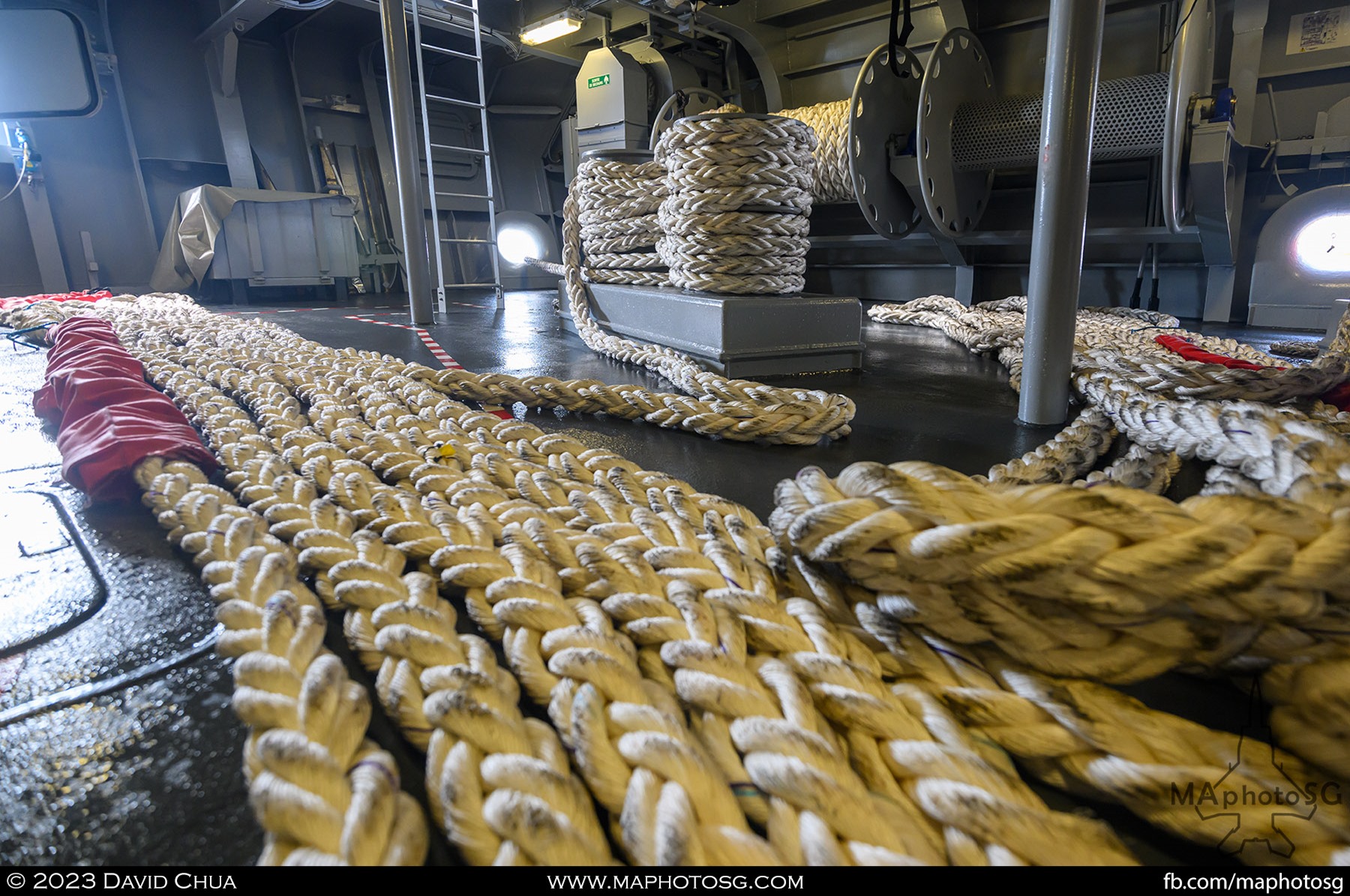
18. Mooring ropes storage area
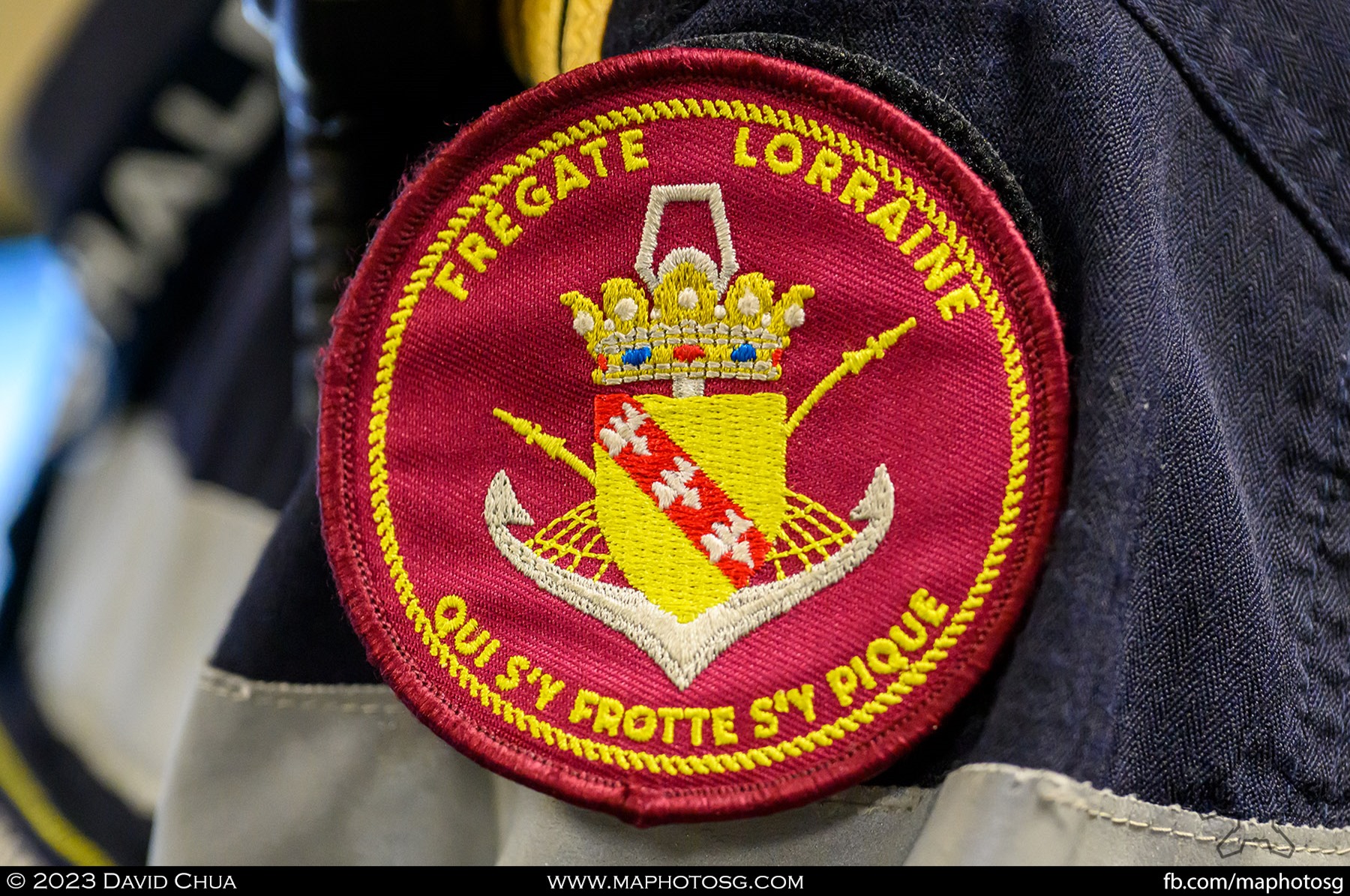
18. Lorraine’s motto translates in English as “If you go looking for trouble, you’ll find it”
During its time in Singapore, the crew met its Republic of Singapore Navy counterparts to share technical knowledge and operational experience, but due to a lack of time, no exercises were arranged. Lorraine departed Singapore on 18 May and is now headed out to the Pacific Ocean where it will carry out exercises and interactions with the Japanese, Australian and Philippines navies before it returns through the Mediterranean back to her homeport of Toulon where she will be declared “admission au service actif” {ready for active duty}.
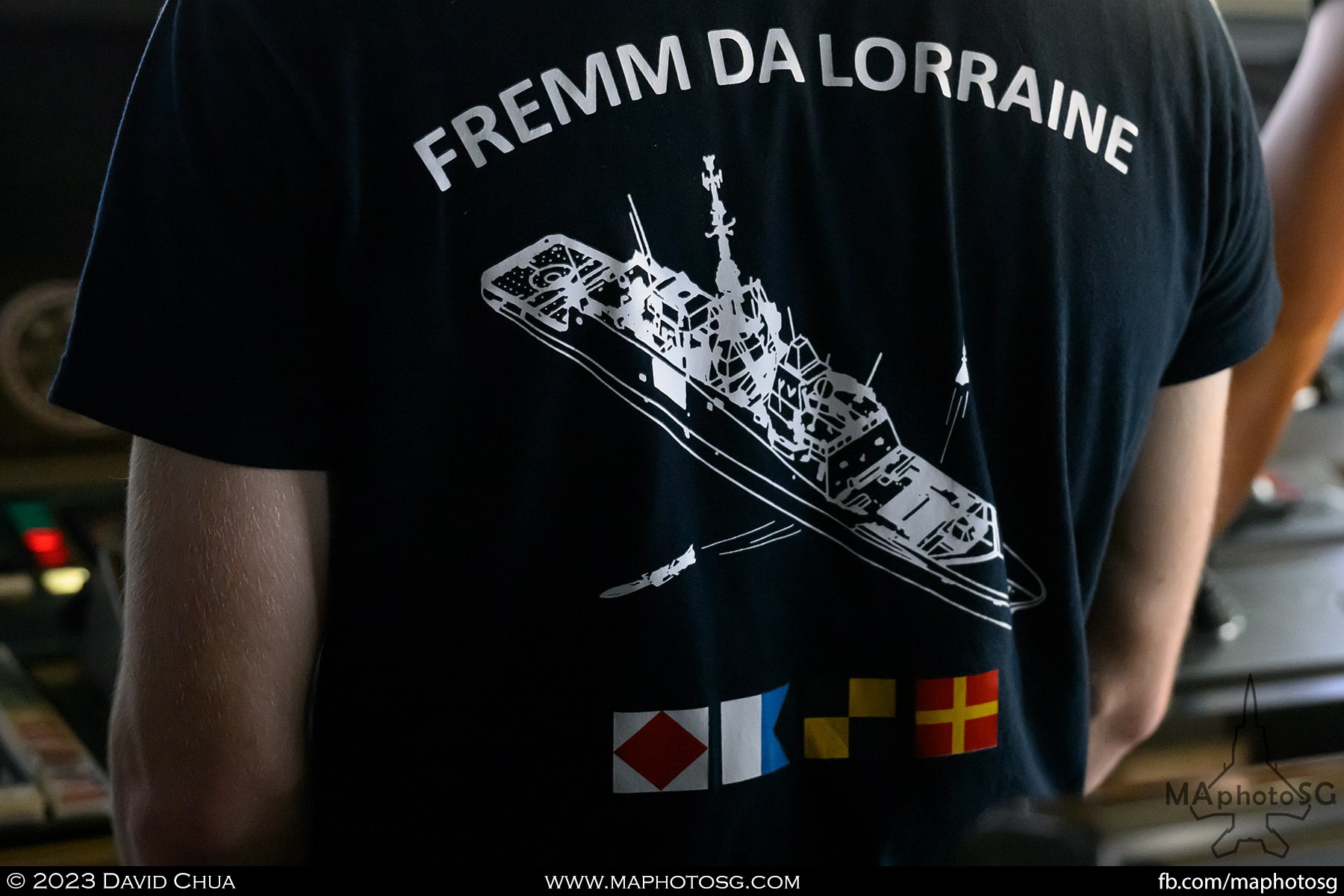
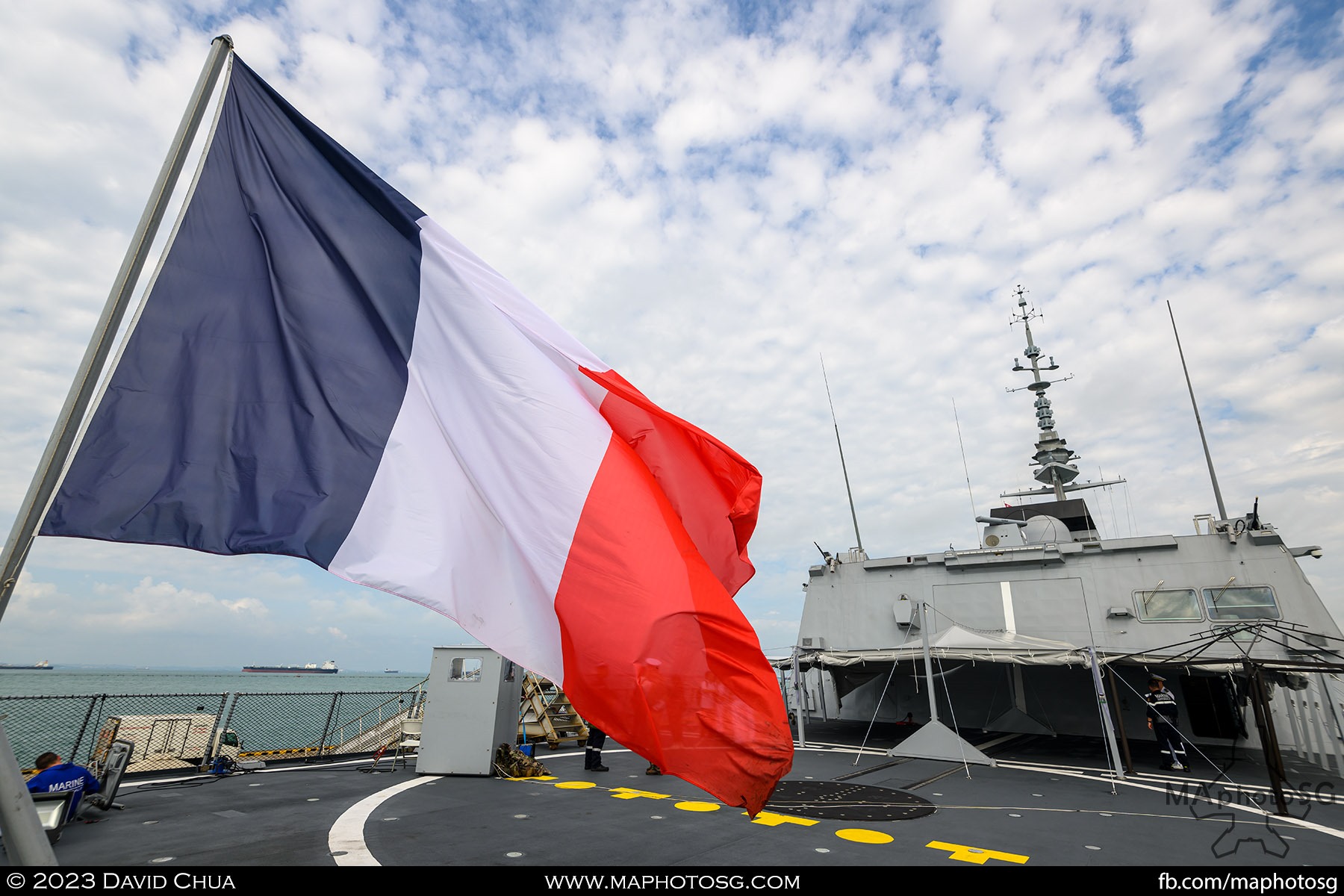

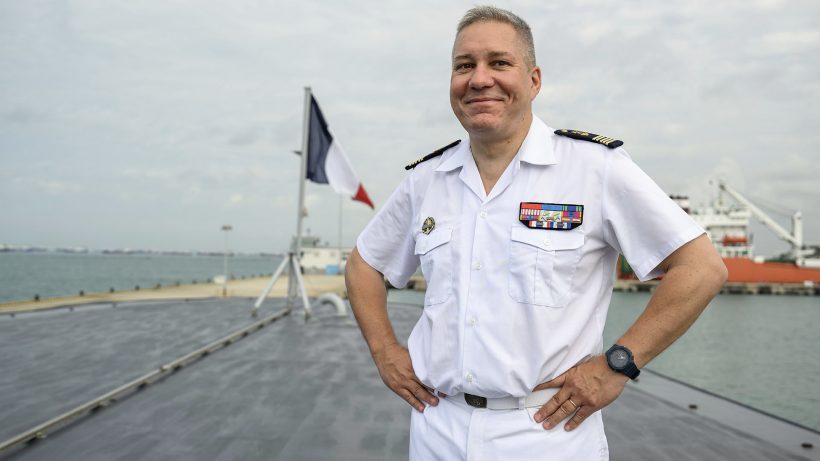
4pi7wg